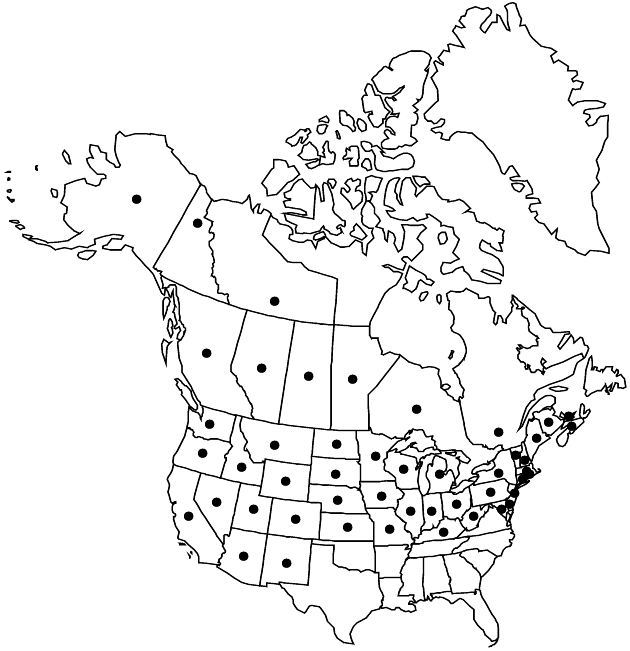Artemisia biennis
Phytographia, 11. 1794.
Annuals or biennials, (10–)30–80(–150) cm, not aromatic. Stems 1, erect, often reddish, simple (finely striate), glabrous. Leaves cauline, green or yellow-green (sessile); blades broadly lanceolate to ovate, 4–10(–13) × 1.5–4 cm, 1–2-pinnately lobed (ultimate lobes coarsely toothed), faces glabrous. Heads (erect, subsessile) in (leafy) paniculiform to spiciform arrays 12–35(–40) × 2–4 cm (lateral branches relatively short). Involucres globose, 2–4 × (1.5–)2–4 mm. Phyllaries (green) broadly elliptic to obovate, glabrous. Florets: pistillate 6–25; bisexual 15–40; corollas pale yellow, ca. 2 mm, glabrous. Cypselae ellipsoid (4–5-nerved), 0.2–0.9 mm, glabrous. 2n = 18.
Phenology: Flowering mid summer–late fall.
Habitat: Disturbed habitats, margins of vernal pools, desert flats, usually clay or silty soils
Elevation: 600–2000 m
Distribution

Alta., B.C., Man., N.B., N.W.T., N.S., Ont., P.E.I., Que., Sask., Yukon, Alaska, Ariz., Calif., Colo., Conn., Del., Idaho, Ill., Ind., Iowa, Kans., Ky., Maine, Md., Mass., Mich., Minn., Mo., Mont., Nebr., Nev., N.H., N.J., N.Mex., N.Y., N.Dak., Ohio, Oreg., Pa., R.I., S.Dak., Utah, Vt., Wash., W.Va., Wis., Wyo., introduced in Europe, Pacific Islands (New Zealand).
Discussion
Artemisia biennis is naturalized and weedy in the eastern portion of its range. It is morphologically similar to A. annua, differing primarily in the coarser leaf lobes and larger heads that are sessile in axils of leaflike bracts. Artemisia biennis is considered native to the northwest United States; it may be introduced in other parts of its range. The type specimen is a horticultural specimen from New Zealand.
Selected References
None.